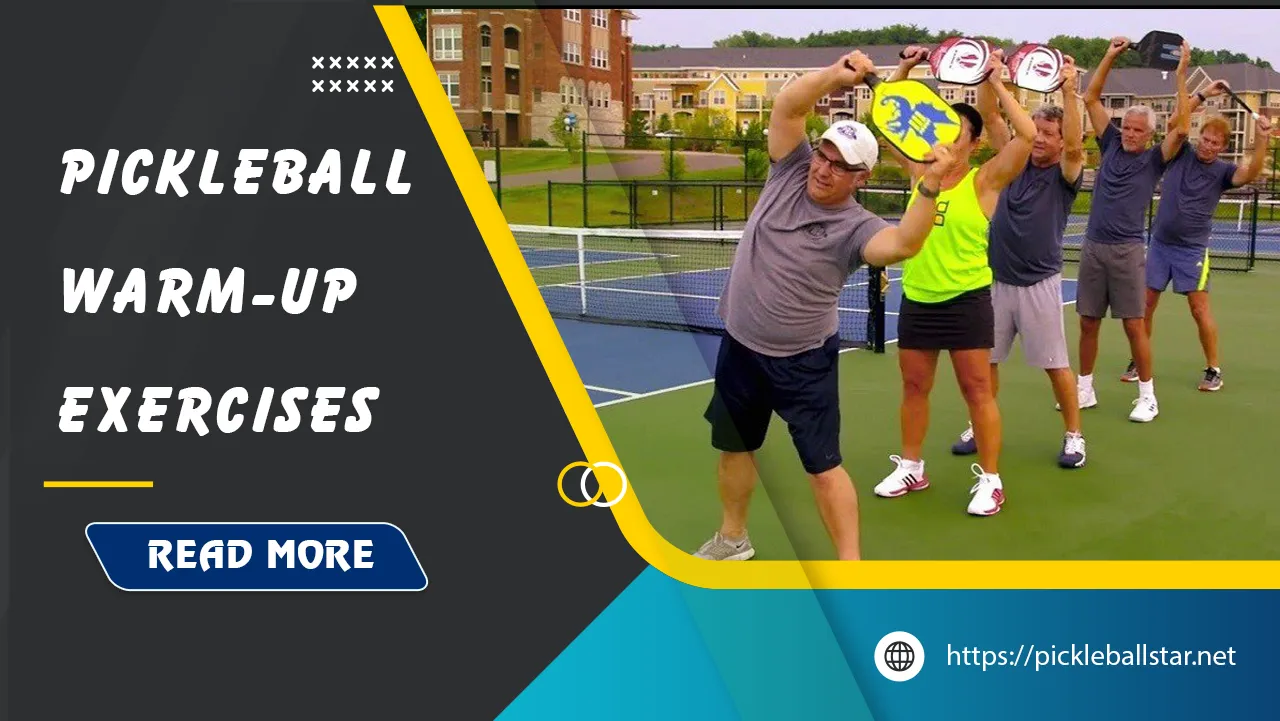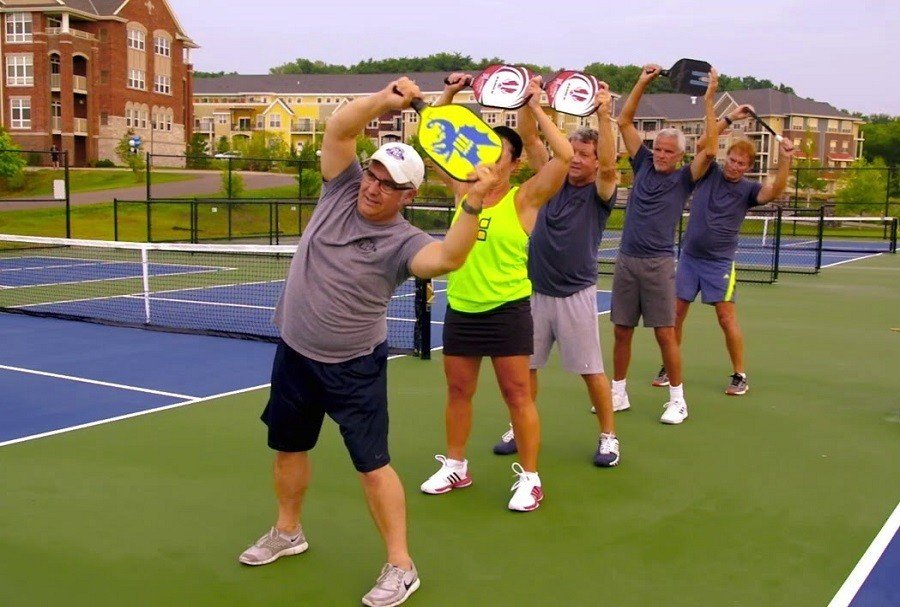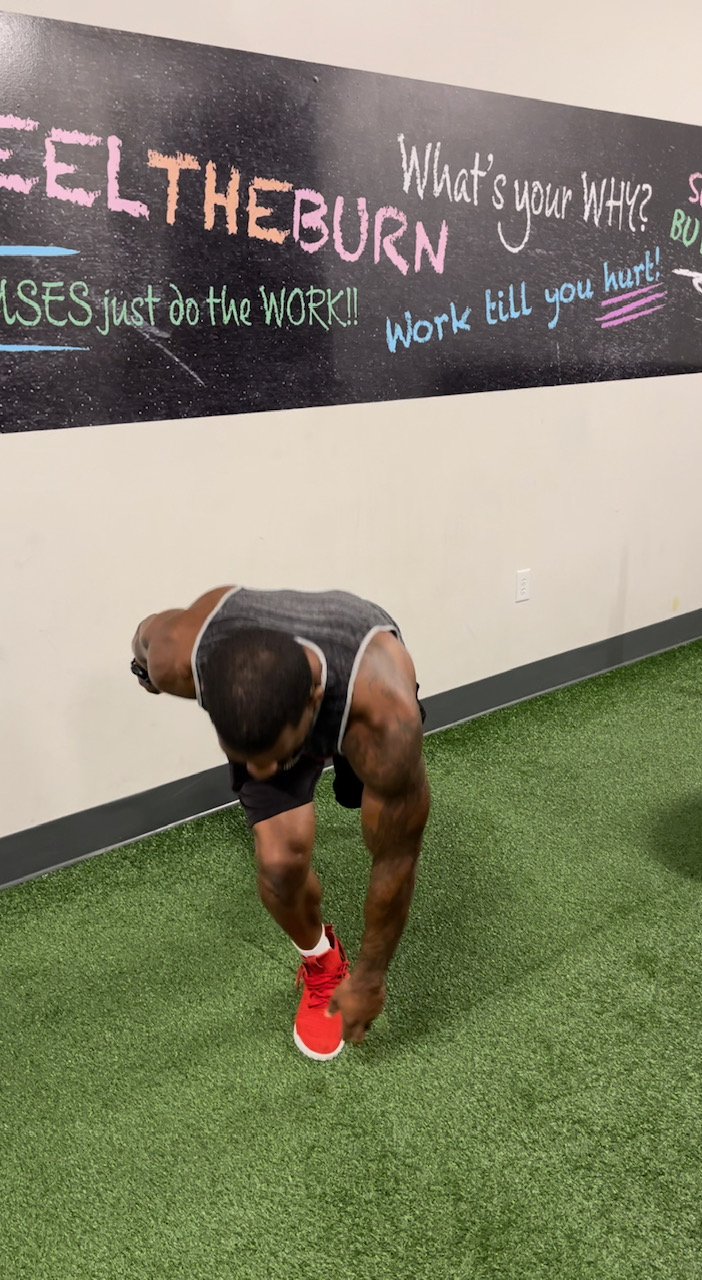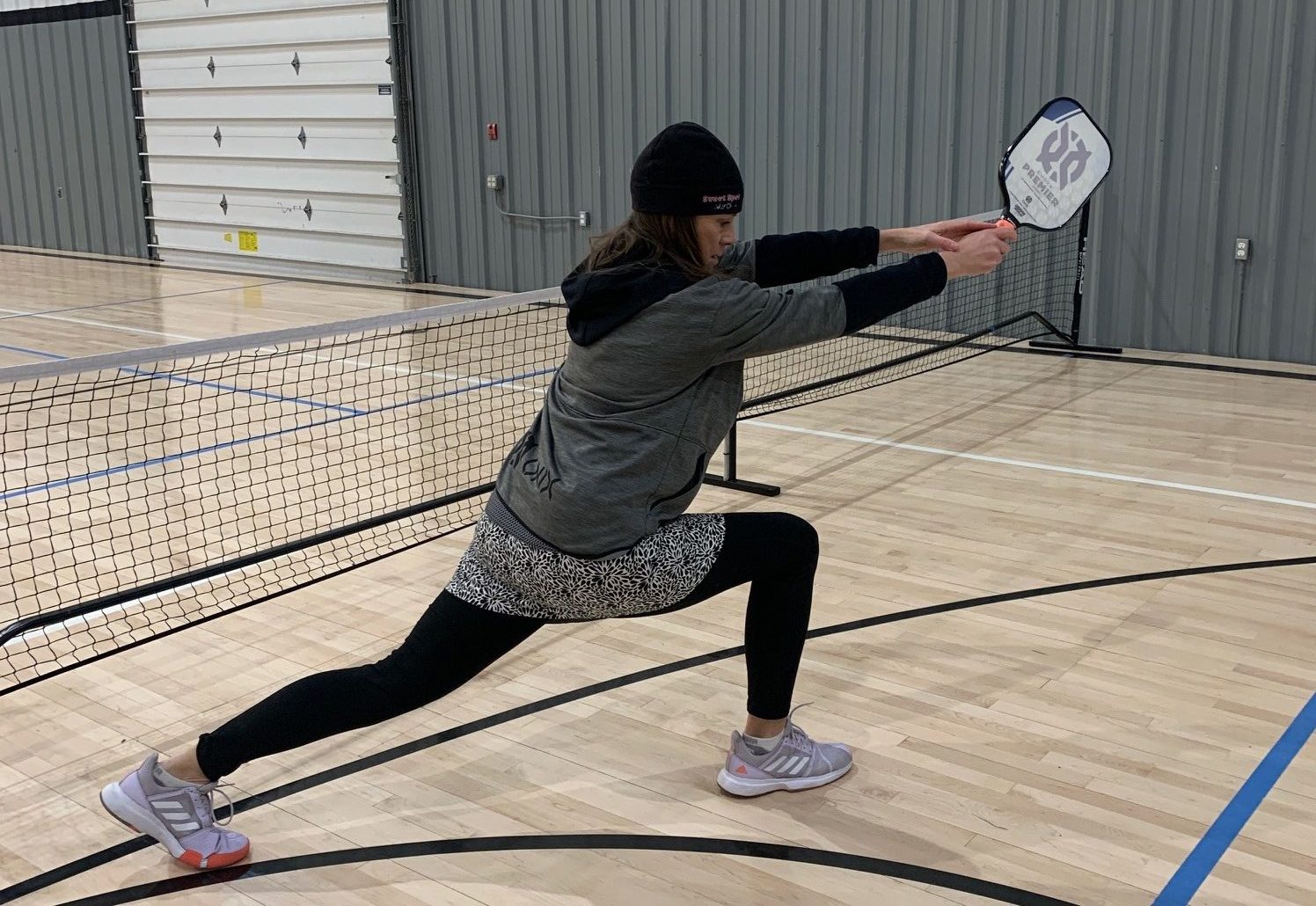Ready to Play: Essential Pickleball Warm-Up Exercises
Warming up before playing pickleball is not merely an optional step; it is an essential practice that serves multiple purposes. The significance of a proper warm-up routine extends beyond the physical; it is a mental preparation that sets the stage for an enjoyable, injury-free game. As pickleball has rapidly grown in popularity, attracting players of all ages and skill levels, understanding the Pickleball warm-up exercises and their benefits becomes paramount. Engaging in a structured warm-up routine significantly minimizes the risk of injuries, enhances performance, and fosters a positive mindset, all of which contribute essential aspects to the overall pickleball experience.

With its fast-paced nature, pickleball demands quick reflexes and dynamic movements. Players must pivot, run, and change directions frequently, making them vulnerable to various injuries without proper physical preparation. Consequently, understanding the essential components of effective warm-up exercises becomes integral to any player’s routine. Throughout this article, we will explore the essential elements of warm-ups specific to pickleball, including the importance of warming up, various warm-up exercises ranging from dynamic stretches to cardiovascular activities and how to incorporate them effectively into your pre-game routine.
Importance of Pickleball warm-up exercises

Benefits of Warming Up
Warming up serves a multitude of critical functions that enhance a player’s capabilities. Among these, several key benefits stand out, illustrating the physiological and psychological advantages that come from a well-structured warm-up.
- Increased Flexibility and Range of Motion: Having flexible muscles and joints is vital in sports. Warming up enhances joint flexibility, thus allowing for better movement quality. Increased flexibility translates into smoother execution of actions such as serves, dinks, and volleys.
- Enhanced Blood Circulation: As players engage in warm-up activities, the heart rate increases and blood flow to the muscles improves. This elevation prepares muscles for exertion and minimizes the likelihood of strains during gameplay.
- Reduction of Muscle Stiffness: Warming up combats stiffness in muscles, particularly beneficial for athletes who require sudden bursts of movement, which is a staple in pickleball. Avoiding stiffness allows players to pivot, sprint, and lunge without restrictions.
- Lower Risk of Common Injuries: Common pickleball injuries, including strains and sprains, can often be mitigated through effective warm-up routines. By activating the necessary muscle groups beforehand, players minimize their chances of experiencing injuries like rotator cuff issues or Achilles tendonitis .
Common Injuries Associated with Lack of Warm-Up
The absence of a proper warm-up routine in pickleball can lead to various injuries. The consequences can alter a player’s ability to perform optimally on the court, as several common injuries may become exacerbated without adequate preparation:
- Strains and Sprains: These injuries frequently occur when muscles or ligaments are overstretched. Quick direction changes or aggressive movements can lead to painful strains if muscles aren’t warmed up.
- Tennis Elbow: Characterized by pain around the elbow due to repetitive motions, this condition is prevalent in sports involving racquets, like pickleball. Failing to warm up increases the risk of developing this painful condition.
- Rotator Cuff Injuries: The shoulders endure significant stress during pickleball due to the extensive range of motion required. Insufficient warm-ups may lead to injuries in the rotator cuff, resulting in pain that can keep players off the court.
- Achilles Tendonitis: Regular lateral movements in pickleball, combined with inadequate warm-ups, can lead to strain on the Achilles tendon. This injury is particularly common among players engaging in sudden sprints and hops.
- Plantar Fasciitis: Without warming up, the foot’s arch may become overly strained from repetitive jumps and lateral movements, contributing to heel pain commonly experienced by pickleball players.
By emphasizing the importance and benefits of warming up, players can mitigate the risk of the injuries that are prevalent in pickleball and enhance their overall gameplay experience.
How Warm-Up Enhances Performance
A well-structured warm-up routine has been shown to significantly improve performance in a variety of sports, including pickleball. When players engage in dynamic and sport-specific warm-up activities, they activate their neuromuscular systems, enhancing coordination, balance, and reaction times critical attributes needed are vital in pickleball .
- Improved Coordination: A warm-up focuses on engaging major muscle groups, allowing the body to synchronize movements effectively. This synergy enhances overall coordination, enabling quicker responses to opponents on the court.
- Faster Reaction Times: Well-warmed muscles respond more quickly to stimuli. When players are in a warm state, they can react swiftly to balls coming off their opponent’s paddle, a crucial factor when competing against quick exchanges.
- Greater Muscle Activation: Warming up aids in activating muscle fibers and increases the overall strength of muscles during exertion, which can translate to more powerful serves and efficient footwork.
- Higher Energy Levels: A good warm-up elevates heart rate and promotes blood flow to the muscles, resulting in increased energy levels and heightened alertness as players step onto the court ready to compete.
Guidelines for an Effective Warm-Up Routine
Creating an effective warm-up routine for pickleball requires careful consideration of various elements. Players should aim for a structured, 15 to 20-minute warm-up that balances general and specific exercises:
- Duration: Plan for a warm-up that lasts at least 15 minutes to ensure sufficient time for muscle activation and flexibility improvements.
- Components: Dividing the warm-up into general cardiovascular activities, dynamic stretching, and sport-specific drills can ensure comprehensive coverage:
- General Exercises: Start with light jogging to elevate heart rate and sweat gradually.
- Dynamic Stretching: Include leg swings, arm circles, and torso twists to engage vital muscle groups.
- Sport-Specific Drills: Incorporate pickleball movement patterns and shadow swings to mimic the actual gameplay.
- Consistency: Players are encouraged to incorporate warm-up routines into every session, not just during tournaments. Consistent practice enhances body awareness and muscular readiness .
- Mindful Breathing: Incorporating mindful breathing techniques during warm-up can promote relaxation, enhance focus, and mentally prepare players for the game.
By implementing these guidelines, players can create a warm-up routine tailored to their individual needs, ultimately leading to improved performance and enjoyment of the game.
Dynamic Stretching Exercises
Dynamic stretching exercises are crucial components of any sports warm-up routine, particularly in pickleball. They improve mobility, increase flexibility, and prepare the body for the types of movements required during gameplay. The following dynamic stretches highlight some of the most effective exercises tailored specifically for pickleball players:

Leg Swings
Leg swings provide a dynamic method for warming up the hip flexors and legs, creating the flexibility needed for the lateral and vertical movements common in pickleball.
- Execution: Stand next to a wall or a stable surface for support. Swing one leg forward and backward while keeping your upper body stable. Focus on generating movement from the hip joint rather than the knee.
- Repetitions: Perform about 10-15 swings for each leg, gradually increasing the range of motion as you become more comfortable.
- Benefits: This exercise effectively increases the hip joint’s range of motion and engages the lower body muscles, readying them for explosive movements on the court.
Arm Circles
Arm circles are essential for warming up the shoulder joints and improving overall upper body mobility. Given the emphasis on overhead strokes in pickleball, incorporating this exercise is vital.
- Execution: Stand with feet hip-width apart and extend your arms out to the side at shoulder height. Slowly make large circular motions with your arms, moving clockwise for a specified count and then reversing direction.
- Repetitions: Perform this for 10-15 circles in both directions.
- Benefits: Arm circles enhance blood flow to the shoulder area, crucial for engaging in the overhead and swinging motions required during gameplay.
Torso Twists
Torso twists are vital for heating the core muscles and improving spinal mobility, which is necessary for efficient shot execution.
- Execution: Stand with your feet shoulder-width apart. Extend your arms to shoulder height and rotate your torso to the right, then to the left, keeping your hips facing forward.
- Repetitions: Aim for 10-15 twists on each side.
- Benefits: This dynamically stretches the muscles around the trunk and helps prepare players for rotational movements involved in serves and strokes during play.
Hip Circles
Hip circles provide an excellent means of enhancing mobility and flexibility in the hip joint, a critical aspect of lateral movements typical in pickleball.
- Execution: Stand with your feet shoulder-width apart and place your hands on your hips for stability. Move your hips in a circular motion, performing clockwise circles first, followed by counterclockwise circles.
- Repetitions: Complete 10-15 circles in each direction.
- Benefits: This exercise warms up the hip joints, preparing them for the fast lateral movements required during games.
Lateral Lunges
Lateral lunges target the muscles involved in side-to-side movements, building strength and flexibility in the hips and legs, which are vital for pickleball.
- Execution: Stand with your feet hip-width apart. Step out to the right, bending into a lunge while keeping your left leg straight. Return to the starting position and repeat on the left side.
- Repetitions: Aim for 8-10 lunges on each side.
- Benefits: This exercise engages the outer and inner thighs, enhancing balance and flexibility in the hips and knees, critical for effective gameplay .
Incorporating these dynamic stretching exercises into a warm-up routine before starting pickleball can significantly enhance performance while reducing the risk of injury. These exercises not only prepare the muscles and joints but also contribute to developing good movement patterns crucial for gameplay.
Cardiovascular Warm-Up Activities
A crucial aspect of warming up for any physical activity is increasing your heart rate and boosting blood circulation. This section highlights effective cardiovascular warm-up activities specifically effective for preparing players for the fast-paced nature of pickleball.

Jogging in Place
Jogging in place provides an excellent cardiovascular warm-up that raises your heart rate and activates your leg muscles.
- Execution: Stand with your feet shoulder-width apart. Begin jogging without moving forward, lifting your knees slightly and landing softly on the balls of your feet.
- Duration: Jog in place for approximately 3-5 minutes.
- Benefits: This exercise not only warms up the lower body but also gets the blood pumping throughout your entire body, preparing you for more intense movements.
Jumping Jacks
Jumping jacks serve as a fantastic full-body warm-up exercise, engaging various muscle groups while elevating your heart rate.
- Execution: Stand with your feet together and arms at your sides. Jump while spreading your feet shoulder-width apart and raising your arms overhead. Return to the starting position and repeat.
- Repetitions: Aim for 20-30 jumping jacks.
- Benefits: Jumping jacks effectively engages multiple muscle groups, improving overall coordination and fitness levels while getting the heart rate elevated for the game ahead.
Butt Kicks
Butt kicks are a great cardiovascular exercise that specifically targets the hamstrings while elevating heart rate.
- Execution: Stand with your feet shoulder-width apart. Jog in place while trying to kick your heels towards your glutes.
- Duration: Engage in butt kicks for about 1-2 minutes.
- Benefits: These movements warm up the hamstrings and enhance overall lower body mobility, setting the stage for quick bursts of activity.
High Knees
High knees serve as an effective cardiovascular warm-up exercise that also enhances lower body strength and flexibility.
- Execution: Stand tall and jog in place, lifting your knees as high as possible towards your chest while pumping your arms.
- Duration: Continue high knees for about one minute.
- Benefits: This activity promotes knee mobility and engages the core, essential for maintaining balance and stability during pickleball play.
Agility Ladder Drills
Agility ladder drills are fantastic for improving foot speed and agility, attributes crucial for success in pickleball.
- Execution: Place an agility ladder on the ground and perform various footwork patterns, such as lateral shuffles, in-and-out steps, and run-throughs.
- Duration: Spend approximately 3-5 minutes on different drills, aiming for efficiency and speed.
- Benefits: These drills enhance players’ reaction times, coordination, and agility, preparing them for explosive movements required during the game.
Incorporating these cardiovascular warm-up activities into your pre-game routine will not only increase blood flow to the muscles but also enhance overall performance. By elevating your heart rate and stimulating various muscle groups, you can adequately prepare your body for the fast-paced actions characteristic of pickleball.
Specific Warm-Up Exercises for Pickleball
After addressing both general cardiovascular exercises and dynamic stretches, implementing specific warm-up exercises tailored for pickleball can further enhance readiness before a match. The exercises detailed in this section are critical for mimicking the actual movements experienced in gameplay, ensuring players’ bodies are adequately prepared to perform optimally.

Shadow Swings
Shadow swings involve mimicking the swinging motions used during gameplay, providing both physical warm-up and mental visualization.
- Execution: Stand in your ready position with your paddle. Execute the motions of both forehand and backhand swings without making contact with the ball, focusing on footwork as you move around your space.
- Duration: Continue shadow swings for about 2-3 minutes.
- Benefits: This exercise not only warms up the shoulder and arm muscles but also reinforces muscle memory, enabling sharper accuracy and technique during actual play.
Pickleball Movement Patterns
Incorporating specific movement patterns into the warm-up can simulate the actions players will utilize during a game.
- Execution: Perform short lateral shuffles, split steps, and forward/backward movements across the court or a designated space.
- Duration: Engage in these movement patterns for approximately 3-5 minutes.
- Benefits: This warm-up will activate the key muscle groups involved in pickleball while encouraging base readiness for rapid directional changes during matches.
Wrist and Ankle Circles
Wrist and ankle circles are vital warm-up exercises targeting critical joint mobility, enhancing flexibility and range of motion in these areas.
- Wrist Circles: Extend your arms in front of you and rotate your wrists in a circular motion, both clockwise and counterclockwise for 10-15 repetitions each.
- Ankle Circles: Stand on one leg and draw circles with your foot while keeping the other leg lifted. Perform for 10-15 repetitions in both directions.
- Benefits: These preparations ensure that the joints are supple, reducing the chance of strains during play.
Squats and Lunges
Squats and lunges are effective for activating key muscle groups that engage during pickleball gameplay.
- Squats: Stand with your feet shoulder-width apart and perform squats, keeping your back straight and engaging your core (10-15 repetitions).
- Lunges: Step forward with one leg, lowering your hips until both knees form right angles. Alternate legs for 10-12 lunges on each side.
- Benefits: Both exercises promote strength and conditioning of the leg muscles crucial for running, jumping, and quick pivots needed in pickleball.
Neck and Shoulder Rolls
Neck and shoulder rolls are vital for relieving tension and promoting flexibility, particularly necessary for the upper body movements in pickleball.
- Neck Rolls: Slow circular motions of the head help relieve tension in the neck. Perform 5-10 rotations in each direction.
- Shoulder Rolls: Stand tall, lift shoulders to the ears, and roll them back and down. Repeat this movement for 10 rounds forward and backward.
- Benefits: These exercises help loosen tight areas that may become strained during gameplay, encouraging a more fluid range of motions in shots.
Integrating these specific warm-up exercises before playing pickleball can significantly enhance players’ preparedness. By activating the relevant muscles and joints, athletes can anticipate and respond more effectively to the fast-paced demands of the game.
Static Stretching Post-Warm-Up
After an active warm-up, transitioning to static stretching can be beneficial for muscle recovery and flexibility. Statics stretches allow muscles to relax and elongate post-exercise, preventing tightness and enhancing the range of motion.
Quadriceps Stretch
This stretch targets the quadriceps muscles at the front of the thigh, crucial for movements involving running and jumping in pickleball.
- Execution: Stand on one foot, bending the opposite knee and pulling the heel toward your buttock with the corresponding hand. Keep your knees together and push your hips forward slightly.
- Duration: Hold this position for 15-30 seconds, feeling the stretch along the front of your thigh, then switch to the other leg.
- Benefits: This stretch aids in reducing tension in the quads and enhances flexibility, improving overall movement quality during play.
Hamstring Stretch
The hamstring stretch is pivotal in maintaining flexibility in the muscles located at the back of the thighs, helping to avoid tightness that can occur during vigorous activity.
- Execution: Sit on the ground with one leg extended straight and the other leg bent. Reach forward towards the toes of the extended leg, ensuring to keep the knee straight.
- Duration: Hold for 15-30 seconds, feeling the stretch in the back of the thigh.
- Benefits: This exercise can ease hamstring tension accumulated during high-intensity play, promoting better range of motion.
Calf Stretch
Stretching the calf muscles is crucial for maintaining flexibility and mobility in the lower legs, aiding in swift movements during matches.
- Execution: Stand facing a wall, stepping one foot back while keeping the other foot forward. Press the heel of the back foot down and lean into the wall gently.
- Duration: Maintain the stretch for 15-30 seconds before switching legs.
- Benefits: Stretching the calves helps prevent tightness and injuries, particularly useful for lateral movement during gameplay.
Shoulder Stretch
This stretch primarily targets the shoulder area, increasing flexibility and relieving tension accumulated from paddling movements.
- Execution: Bring one arm across your chest, using the opposite arm to gently pull the arm closer to your body.
- Duration: Hold for 15-30 seconds, then switch sides.
- Benefits: This stretch improves shoulder flexibility, essential for effective overhead shots and serves in pickleball.
Triceps Lat Stretch
This stretch focuses on the upper arms and back, promoting flexibility and recovery.
- Execution: Stand tall and raise one arm overhead, bending the elbow and letting your hand reach down toward your upper back. With the opposite hand, gently pull on the elbow to enhance the stretch.
- Duration: Hold for 15-30 seconds and then switch arms.
- Benefits: The triceps lat stretch counterbalances shoulder tension from paddle swings, essential for overall upper body flexibility.
Implementing these static stretches following the warm-up can significantly enhance muscle elasticity and promote overall recovery in preparation for the gameplay to follow.
Pre-Game Routine Examples
Creating a pre-game routine helps players prepare mentally and physically for an upcoming game or match. It provides structure, ensuring participants know what to expect and can focus their minds on the competition ahead.
Comprehensive 10-Minute Warm-Up
Here’s a structured example of a 10-minute warm-up routine tailored for pickleball players:
- 0-2 Minutes: Light Jogging – Gradually increase your pace and get the heart rate up.
- 2-5 Minutes: Dynamic Stretches:
- Arm Circles (1 minute).
- Leg Swings (1 minute).
- Torso Twists (1 minute).
- 5-8 Minutes: Cardiovascular Activities:
- Jumping Jacks (30 seconds).
- High Knees (30 seconds).
- Butt Kicks (30 seconds).
- 8-10 Minutes: Specific Drill Work: Engage in shadow swings and movement patterns specific to pickleball for another 2 minutes.
Tailoring Warm-Up to Skill Level
It’s essential to consider players’ skill levels when creating a pre-game routine. Here are tailored strategies based on skill levels:
- Beginners: Focus on fundamental movements and basic stretches. Ensure enough time for adjustments and learning movement patterns.
- Intermediate Players: Add more complex drills, encouraging speed and accuracy in hits to foster better gameplay awareness.
- Advanced Players: Integrate sport-specific condition protocols aimed at reflex improvement and sharpening competitive instincts on the court.
Time Management Before Play
Managing time effectively before play is fundamental, especially in competitive settings. Allocate segments within the warm-up for exercises, ensuring every aspect of the warm-up routine is executed comfortably without rush.
Incorporating Mindful Breathing
Grasping the importance of mental preparation, breathing techniques can play a crucial role before matches. Spend a few moments focusing on deep breaths, ensuring relaxation and reinforcement of positivity.
Monitoring Physical Responses
As warm-ups are undertaken, players should monitor their physical responses and adjust exercises as necessary. Pay attention to how your body feels during the routine to prevent overexertion and tailor movements to prepare adequately.
By understanding and executing these pre-game routines, players can step onto the court feeling physically ready, mentally focused, and prepared for the challenges that lie ahead.
FAQs
What kind of stretching should I do before pickleball?
Before playing pickleball, incorporate a mix of dynamic and static stretching. Dynamic stretches like leg swings, arm circles, and high knees effectively warm up muscles and promote flexibility while static stretches should focus on areas like the shoulders and hamstrings post-warm-up.
How to warm up the shoulder for pickleball?
To warm up the shoulder, engage in arm circles, shoulder stretches, and pectoral stretches. These movements enhance mobility and prepare the upper body for the overhead and swinging motions used in pickleball.
Is 70 too old to play pickleball?
No, 70 is not too old to play pickleball. In fact, it’s commonly enjoyed by seniors. The sport provides various health benefits and is adaptable, benefiting from engaging in regular warm-ups and stretches to maintain mobility and reduce injury risks.
What is the number one injury in pickleball?
One of the most common injuries in pickleball is tennis elbow, resulting from repetitive motions and overuse. Effective warm-up routines can mitigate these types of injuries.
What exercises strengthen your knees for pickleball?
Strengthening the knees can be achieved through lunges, squats, wall sits, and leg presses. These movements enhance the support of the knee joint and promote stability necessary for the quick motions required in gameplay.
Conclusion
Engaging in a well-structured warm-up routine is indispensable for players of all skill levels in pickleball. A comprehensive approach that combines cardiovascular activities, dynamic stretching, sport-specific movements, and static stretches ensures players are not only preparing their bodies but also fostering a positive mindset before competition. By incorporating these Pickelball warm-up exercises, individuals can enhance their performance, minimize injury risks, and enjoy the exhilarating game of pickleball even more. Remember, the most enjoyable games come when players step onto the court feeling ready physically and mentally prepared for the challenge ahead. Prioritizing a proper warm-up is ultimately an investment in your overall performance and longevity in the sport.
